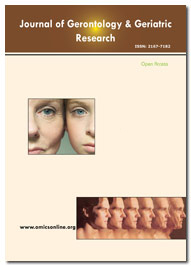ఇండెక్స్ చేయబడింది
- J గేట్ తెరవండి
- జెనామిక్స్ జర్నల్సీక్
- సేఫ్టీలిట్
- RefSeek
- హమ్దార్డ్ విశ్వవిద్యాలయం
- EBSCO AZ
- OCLC- వరల్డ్ క్యాట్
- పబ్లోన్స్
- జెనీవా ఫౌండేషన్ ఫర్ మెడికల్ ఎడ్యుకేషన్ అండ్ రీసెర్చ్
- యూరో పబ్
- గూగుల్ స్కాలర్
ఉపయోగకరమైన లింకులు
ఈ పేజీని భాగస్వామ్యం చేయండి
జర్నల్ ఫ్లైయర్

యాక్సెస్ జర్నల్స్ తెరవండి
- ఆహారం & పోషకాహారం
- ఇంజనీరింగ్
- ఇమ్యునాలజీ & మైక్రోబయాలజీ
- క్లినికల్ సైన్సెస్
- జనరల్ సైన్స్
- జెనెటిక్స్ & మాలిక్యులర్ బయాలజీ
- నర్సింగ్ & హెల్త్ కేర్
- న్యూరోసైన్స్ & సైకాలజీ
- పర్యావరణ శాస్త్రాలు
- ఫార్మాస్యూటికల్ సైన్సెస్
- బయోఇన్ఫర్మేటిక్స్ & సిస్టమ్స్ బయాలజీ
- బయోకెమిస్ట్రీ
- మెటీరియల్స్ సైన్స్
- మెడికల్ సైన్సెస్
- రసాయన శాస్త్రం
- వెటర్నరీ సైన్సెస్
- వ్యవసాయం మరియు ఆక్వాకల్చర్
- వ్యాపార నిర్వహణ
నైరూప్య
Learning to Endure Long-Term Musculoskeletal Pain in Daily Life at Home: A Qualitative Interview Study of the Older Adult ’ s Experience
Catharina Gillsjö, Donna Schwartz-Barcott and Ingrid Bergh
Background: Worldwide, there is an increasing number of older adults, the majority of whom remain living at home. Not infrequently they live with long-term pain, especially musculoskeletal pain, which is associated with increased disability (physical, psychological, social) and a negative impact on quality of life. A deeper understanding of how older adults experience living with this type of pain is needed in order to improve well-being and quality of life. The study focused on the actual experience by living with this global, prevailing and disabling type of pain. The aim was to describe commonalities in how older adults endure long-term musculoskeletal pain in their daily life at home. Methods: This inductive, descriptive study included qualitative semi-structured face-to-face interviews with 19 participants (66 to 88 years) in their homes. Qualitative content analysis by Graneheim and Lundman was used to identify themes crossing participants’ experiences of enduring long-term pain in their daily life. Interviews were audio recorded and transcribed verbatim. Results: All participants felt forced into “learning to live with pain” (main theme), in order to endure their pain. In time, they learned that: taking the pain as it comes, one day at a time; balancing the pain with activity, thoughts and emotions; self-talking; decreasing the burden to family and others; and capturing, enjoying and valuing moments of pleasure (sub-themes) helped them endure the pain. Conclusions: This experience was dominated by learning. The approaches generated to learn to endure pain in daily living by these participants should be discussed with older adults in similar situations for further additions, refinements and validation. Nurses can help to ease the older adult’s suffering by tailoring individualized and holistic care focused on guiding the older adult in learning to live with pain and preserving and promoting health and well-being with a maximum of care and a minimum of intrusion.